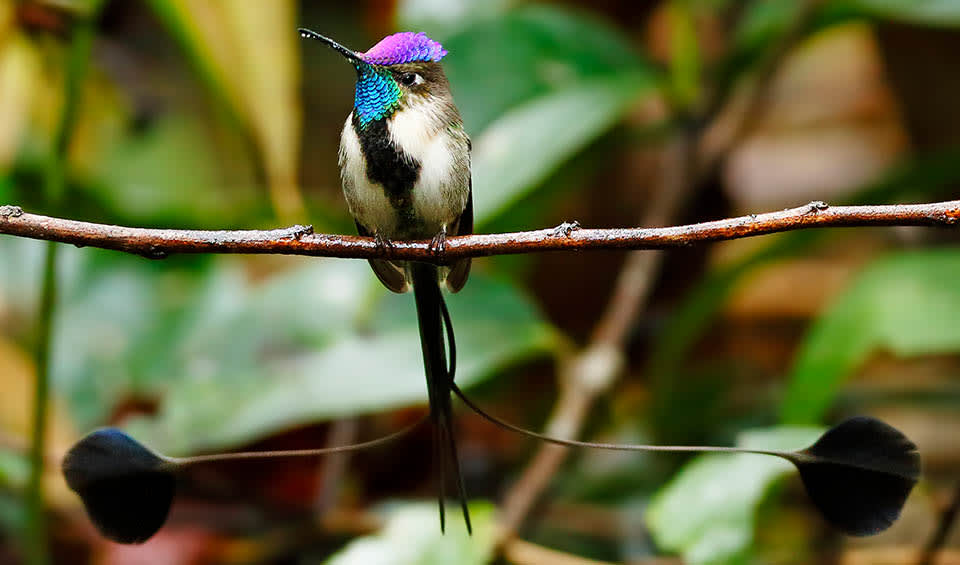This species, commonly known as the Marvelous spatuletail, is endemic to a small area in the Andes of northern Peru, where it inhabits forest edges and shrubby clearings. What sets the male marvelous spatuletail apart is its extraordinary tail, which boasts just four feathers—two of which end in large, paddle-like structures, or ‘rackets,’ that are not seen in any other bird species.
The male marvelous spatuletail is a visual spectacle, particularly during the breeding season when its tail feathers are fully grown. The rackets at the end of the tail are used in elaborate courtship displays designed to attract females. These feathers can be moved independently, creating a mesmerizing dance that is both a display of vigor and an artistic performance.
The male’s courtship behavior is an elaborate and energetically demanding display. He hovers in front of the female, who observes from a perch, and moves rapidly back and forth while twisting the rackets in various patterns. This dance highlights the male’s agility and stamina, qualities that are likely to be favored by the female when selecting a mate.
The long racketed tail feathers of the males are not permanent; they are shed during the annual molt and regrown for the next breeding season. During the molt, males may temporarily lack one or both rackets, which can impact their ability to perform courtship displays.
Distribution
 Peru
Peru Official estimate
Official estimate
Anything we've missed?
Help us improve this page by suggesting edits. Glory never dies!
Suggest an editGet to know me
Terrestrial / Aquatic
Altricial / Precocial
Polygamous / Monogamous
Dimorphic (size) / Monomorphic
Active: Diurnal / Nocturnal
Social behavior: Solitary / Pack / Herd
Diet: Carnivore / Herbivore / Omnivore / Piscivorous / Insectivore
Migratory: Yes / No
Domesticated: Yes / No
Dangerous: Yes / No




